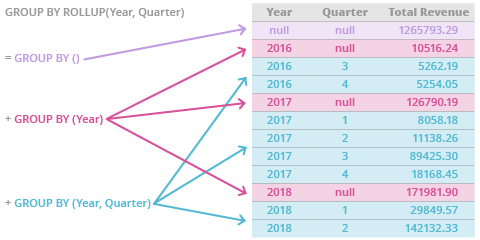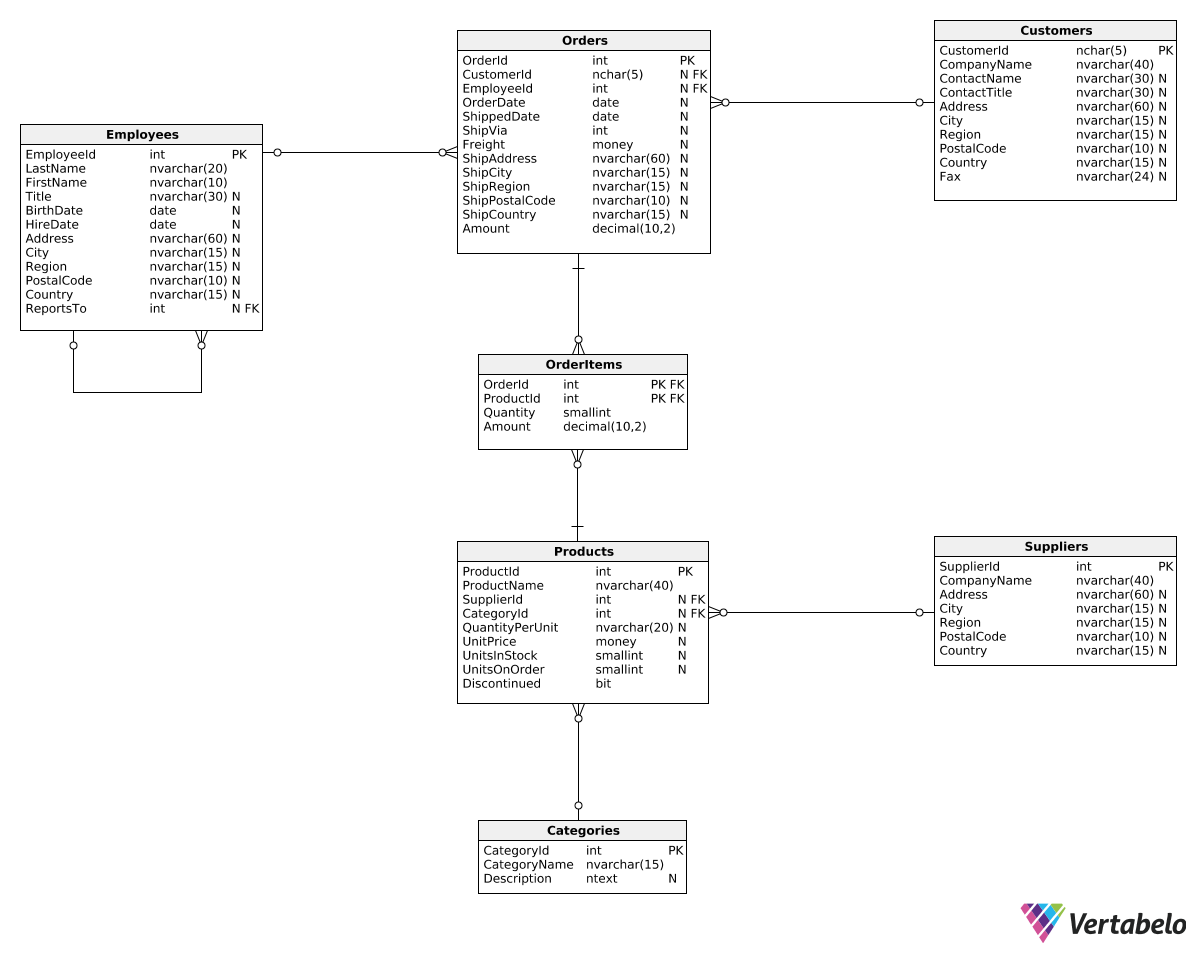Excellent! As you saw, we used ROLLUP() in the GROUP BY clause:
SELECT
DATEPART(Year, OrderDate) AS RevenueYear,
DATEPART(Quarter, OrderDate) AS RevenueQuarter,
SUM(Amount) AS TotalRevenue
FROM Orders
GROUP BY ROLLUP(
DATEPART(Year, OrderDate),
DATEPART(Quarter, OrderDate)
)
ORDER BY
DATEPART(Year, OrderDate),
DATEPART(Quarter, OrderDate);
In SQL Server, ROLLUP() is an extension of GROUP BY. Inside the brackets, we provide all the columns that we want to group the rows by. ROLLUP() first groups the rows by both columns (in this case, Year and Quarter) to compute quarterly sums. Then, it groups all rows by the first column inside the parentheses (Year) to compute the annual sums. Finally, it computes a grand total, i.e. as if we didn't group the rows by anything.
As a general rule, ROLLUP() always creates new grouping combinations by removing columns one by one, starting from the right:
GROUP BY ROLLUP (A, B, C) =
GROUP BY (A, B, C) +
GROUP BY (A, B) +
GROUP BY (A) +
GROUP BY ()
The diagram below explains where the resulting rows come from:

In this course, we're only going to briefly introduce ROLLUP(). To learn more about this and other GROUP BY extensions, check out our GROUP BY Extensions in MS SQL Server course.



